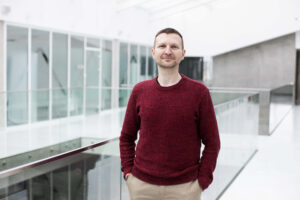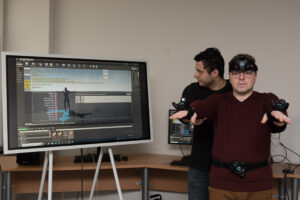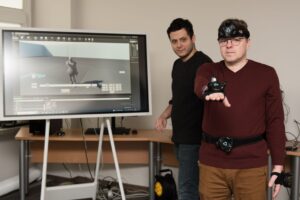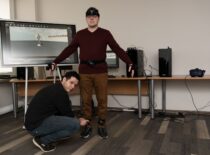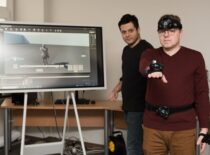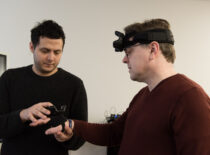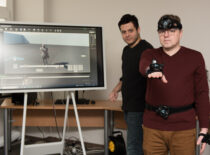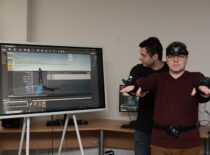Some years ago, virtual reality (VR) systems were associated only with games and leisure in three-dimensional virtual space. Today, VR is used in various fields. The innovation created by the team of Lithuanian scientists is a VR-based rehabilitation system, a VR technology without the VR world and glasses.
According to statistics, in the European Union, stroke is the second most common cause of death and a leading cause of adult disability.
Recently, a team of researchers at the Kaunas University of Technology, Faculty of Informatics, led by Rytis Maskeliūnas, presented iTrain, an interactive game designed to care for people after a stroke. While the iTrain game allows the patient to experience patient care in a virtual environment and teaches other essential aspects, BiomacVR, an innovation of Lithuanian scientists, focuses on patient rehabilitation and the goal of getting the person back on their feet as quickly as possible.
“It is a rehabilitation system with a very simple operation: the person performing the exercises puts the VR sensors on their hands and tries to perform the movements as accurately as possible. With the help of these sensors, the method detects very precisely what the patient is doing in three-dimensional space and reproduces their posture and movements, forming a virtual replica of the person performing the exercises. The doctor can observe and view the exercise from all sides on his monitor and assess it as if the patient was exercising right next to them,” says Maskeliūnas about the system.
Rehabilitation after stroke
According to Aušra Adomavičienė, a researcher at Vilnius University, Faculty of Medicine (VU MF), one of the most common complications in people who have suffered a stroke is an impaired motor function, which is characterised by weakness of the upper and lower limb muscles, spasms, and impaired balance and coordination.
“To match a virtual person with a real patient, we use the person’s height and the length of their arms and legs, which we input into the system. Using this information, the system assesses the centre of each joint being monitored,” says Maskeliūnas about the rehabilitation process.
The system can show deviation and indicate if exercises are not being performed correctly. KTU researcher Maskeliūnas highlights that usually, the incorrect execution of the exercises is a result of an injury or stroke.
The researchers note that the time and potential for recovery varies greatly from patient to patient, and requires a lot of effort, work and expertise. Nevertheless, patients who use the VR system are more engaged in the tasks and strive to complete them as accurately as possible; also, they enjoy seeing the limits of their achievements, feel in control of the situation, and can adjust their movements during the exercise – speed, accuracy and exertion.
So far, the study is limited to stroke patients, but the researchers say that the system could later be adapted for the rehabilitation of patients with other conditions.
Motivates the patient
The recently published study of Lithuanian scientists presents findings from eight commonly used physical education situations from the stroke rehabilitation methodology.
The team emphasises that the introduction and use of new technologies during rehabilitation enables the patient to be involved in the rehabilitation process, develops their imagination and allows them to actively pursue better outcomes.
“By monitoring the results of the virtual feedback, the rehabilitation specialist can discuss with the patient the difficulties experienced during the session, adjust the programme and correct mistakes. The study revealed that by working together and discussing the progress and difficulties of the exercises, the specialist and the patient formulate common goals and discuss the limits of achievement. Also, the patient is more actively involved in the rehabilitation process and becomes a motivated and active participant in the process,” says Adomavičienė.
“The main advantage of this system is that a person can do everything at home, not just in the health care facility, and their progress can be monitored by the doctor remotely, by viewing the recording or by studying the indications of the system,” says Maskeliūnas.
The KTU scientist hopes that in the future, the system could be subsidised as rehabilitation equipment, thus increasing the accessibility and convenience of medical resources.
Read more in the publication: https://doi.org/10.3390/electronics12020339


